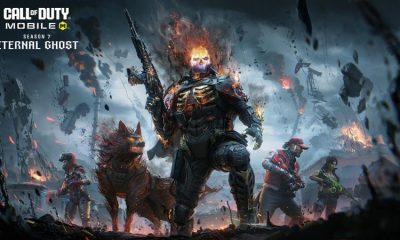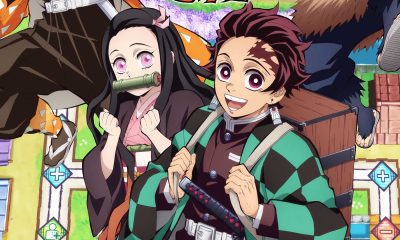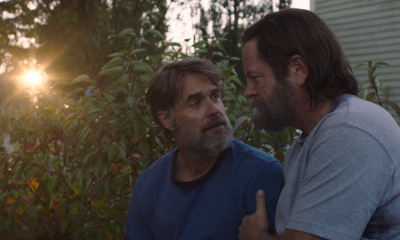
Analysis | Final Fantasy VII Rebirth expands the original story without losing the essence
Follow Us @
Analysis | Final Fantasy VII Rebirth expands the original story without losing the essence
I confess, I feared since the conclusion of Final Fantasy VII Remake that in Rebirth things would go wrong and the story would be lost. The blank check that the Whispers gave in that climax had the potential to leave the writers not knowing what to change and where to stick in the original version, which usually results in mess and dissatisfaction for newcomers and, especially, veterans.
I'm very happy to say that it was a little boring for nothing, since the guiding horizon for Hamaguchi and his team there at Square Enix was the same as what pleased the first chapter of the journey: expanding what was already cool without losing the iconic essence of Final Fantasy VII, seasoning everything with a hint of mystery and novelty here and there to build a remarkable ending.
It's not always pretty, but it captivates

First of all, let's get the elephant out of the room. Yes, Final Fantasy VII Rebirth's graphics leave something to be desired in several ways and are inferior even to the previous chapter of the saga, including this final version. Performance mode should not even be considered for now. Characters can't look good in any setting outside of cutscenes – not even in photo mode – with ugly textures present in droves and the lighting not being the coolest. That said, the game isn't horrible either and shines on some maps with vast landscapes that are pleasant to observe and explore, as well as having pristine scenes, which transition very well straight into the gameplay.
Getting this out of the way immediately is important to make it clear that, despite this and other problems, especially for those who can no longer stand the standard checklists for open world games, the journey here still has many incredible moments and is unmissable, especially for fans long-time.
One point that left me very satisfied, and here I'm talking about both the narrative and the systems, is that Rebirth is Final Fantasy in essence – FINALLY – and carries what made the franchise mark me in my childhood, a distant reality from the series in recent years, that wavered and sometimes lost part of their identity even when they delivered cool gameplay or story.

Controlling a large group of characters, with complete freedom to choose who will fight and who remains in reserve most of the time, having countless summons that can be used whenever the player wants – or almost – and with a real impact on battles, have a menu with various attributes, weapons, spells and more items and equipment to create my style of play more freely, spells are highlighted in the gameplay and, of course, all the monsters, icons and soundtrack you expect from a chapter of saga, is what made this franchise, at some point in the past, set the trends in its genre and even for other games.
All of this is here, which is already a significant improvement over the previous chapter of Remake, but it also doesn't mean that they have excluded the creative freedom given since the last game, which allows new features and additions to greatly expand what was done in 1998 in all the fronts.
The narrative and the world are the main examples. There are new features such as important scenes for the story that never existed in the original, greater focus on some characters – Tifa practically takes the lead in some parts, Barret has a sensational expanded arc and even Cait Sith has moments to shine -, but the feeling is of always be playing the story that captivated you so many years ago, with the key moments that marked the era mostly preserved, only this time with much more filling between them.

Kalm, Gongaga, parts of Junon and several other locations that were tiny passages in the original are now vibrant cities or regions, with side quests, arcs of their own and lots of interesting places to explore and new characters to meet. It's a really cool feeling to see what the surroundings of Nibel are like, the way they expanded the Saucer and finding new characters that don't change the journey as a whole but make it much more interesting. There are even new features that explain more about the history of the universe in order to answer questions from the past or offer more information about something established, which will greatly please the community. At this point it was a great achievement from Square and I can't wait to see what they do to close this trilogy.
Open world leaves a lot to be desired

Obviously, not all new developments always work. The “open world” will divide opinions, for example. The structure here, in fact, is more like separate maps, even though they are huge, rather than a vast open world full of interconnected regions with free traversal. Overall, I much prefer the way Rebirth chose, but instead of these areas taking advantage of this advantage to deliver greater density and interesting activities, the choice was for the tired format of climbing towers, releasing different but repetitive dots on the map and then start collecting.
Apart from the activity of collecting a series of relics – which has its own story line and changes the activity on each new map – everything else is repeated on every map. Find sources of mako, face special versions of the same enemies that are out there on the map, play a mini game capturing moogles and catalog a series of information for Chadley to say more about the world and create new Materials.
On the first map it's actually fun to do all the activities and it's worth saying that the number of these dots on each map is not as numerous as in the games that Rebirth was inspired by here, such as those in the Horizon and Ghost of Tsushima franchise, but as there are many scenarios and there is little variation in what you are going to do, from the middle onwards it becomes quite boring to complete everything the world has to offer.

On the positive side, navigating this world is very smooth and there is a lot of variation between one map and another. Each map has its own Chocobo, which has a different color, cosmetic equipment from the region and its own mechanics, which range from climbing walls to using water jets to reach absurd heights where some of the map's dots are hidden. There is also a very large number of places to take quick trips. Just click on a visited point and that's it, the player is probably close to where they wanted to go.
This navigation and the not excessive number of points to solve on the map make the dynamics calmer than in conventional open world games, especially those of the Ubisoft style, but even so there is a fatigue in the second half of the game that is just saved by the absurd amount of fun minigames and the story itself, which is really cool.
Giant content

With over 80 hours in the game for this review, I still have a lot of secondary content left to complete. This is because the dots on the map are just a part of the whole – perhaps they are not even half of it. There are a multitude of mini games, side missions and activities that are released during the game and guarantee many extra hours of dedication to the world created here.
When it comes to mini games, you can even compare it to games from the Yakuza series. It's impressive how they managed to put variations of them here, from the complex and fun card game that has its own story line and dozens of NPCs to face, to Chocobo racing, playing the piano, a “navinha” game, new challenges of gym and much, much more. You can play around 30 or 40 mini games, maybe more, to try out and try to master during the adventure. Most of them are interesting or fun and have completion challenges that give valuable items, often even weapons, which adds a lot to the content.
There are also a number of secondary missions on each map and more will open up throughout the campaign. Not all of them are wonderful, but many of them are worth it and are much better than the uninspired ones in the last chapter of the remake. Each of them guarantees extra affinity points with the group, which is nothing hidden like in the original version but has extra functions, even in the best part of the game: combat.
Expanded combat

Combat was the highlight of Final Fantasy VII Remake and it returns even more complete and full of possibilities in Rebirth. As it is possible to control who will fight in your group and there are many characters, the new skills together went very well, which encourage the player to use more members in the group and switch between them during battles. Each action performed guarantees a point for synergy skills and when two characters reach a certain amount of affinity points, they can use these powerful combinations that change battles.
The bosses, in fact, are another highlight both in terms of visuals and gameplay. This time Sephiroth was more on the lookout, as in the original, serving as a constant fear for Cloud's group, but it's not just him who shines, there are many other big bosses, from robots to monsters and iconic characters that take everything from the player. and require good mastery of each character's skills to be defeated.

Each character still has their own skill kit and differs greatly from each other. Cait Sith and Red XIII, the biggest new additions here, add a lot with their totally different combat styles. The cat can summon a Moogle that helps in battle and uses the luck of the dice to cause a lot of damage. The dog is extremely fast and has a counter attack system and a mode called revenge that are very powerful for those who have mastered the game's defense and attack techniques.
What was already good has improved and it continues to be a lot of fun to fight in this game, and what is most promising for the franchise as a whole for the future when it comes to combat.
Conclusion

Final Fantasy VII Rebirth doesn't always get it right and there are serious performance and graphics problems that undermine the experience, as well as repetitive activities in the open world. But when it gets it right it does it right and the amount of quality content here, whether in combat, side missions or the incredible campaign, makes the journey not only worthwhile but unmissable.
Pros
- Dynamic combat full of possibilities has been expanded
- Story largely faithful to the original, with cool new features and more time for each character to shine
- Lots of fun and challenging minigames
- Full control of the character group and good RPG options
Cons
- Graphics well below expectations and problematic performance
- Open world with repetitive and tiring activities
Rating: 8.5/10.0
A copy of the game was provided by Square Enix for the preparation of this analysis
Analysis | Final Fantasy VII Rebirth expands the original story without losing the essence
Follow AFRILATEST on Google News and receive alerts for the main news about trending game reviews, Anime, series, entertainment and lots more!
SHARE POST AND EARN REWARDS:
Join our Audience reward campaign and make money reading articles, shares, likes and comment >> Join reward Program
FIRST TIME REACTIONS:
Be the first to leave us a comment, down the comment section. click allow to follow this topic and get firsthand daily updates.
JOIN US ON OUR SOCIAL MEDIA: << FACEBOOK >> | << WHATSAPP >> | << TELEGRAM >> | << TWITTER >
#Analysis #Final #Fantasy #VII #Rebirth #expands #original #story #losing #essence
-

 Fashion3 months ago
Fashion3 months agoVogue Arabia cover welcomes Salma Hayek in an interview with Penélope Cruz
-

 Football3 months ago
Football3 months agoVAR points out Diego Costa's offense against the fourth referee
-

 USA today entertainment3 months ago
USA today entertainment3 months agoBeyonce with the single “Break My Soul” leads on Spotify Brazil
-

 Health and Fitness3 months ago
Health and Fitness3 months agoVaccine against the reappearance of skin cancer enters final testing phase
-

 USA today entertainment3 months ago
USA today entertainment3 months agoSZA, Future and DJ Khaled come together in collaboration
-

 News3 months ago
News3 months agoParents of former player Waleswska are pressured by widower to pay rent for the house where they live
-

 USA today entertainment3 months ago
USA today entertainment3 months agoLarissa Luz and Linn da Quebrada enchant at the Multishow Awards with a tribute to Elza Soares.
-

 Good News TV series3 months ago
Good News TV series3 months agoThe shocking reason behind the decision not to show dead characters in The Last Of Us episode revealed










































